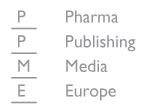EMA has developed guidelines for the regulatory approval of ‘generic’ biotechnology derived proteins, or ‘biosimilars’. The first product-specific version of these guidelines has gone through two rounds of public consultation, including for the approval of biosimilar erythropoietins for the treatment of renal anaemia, and serves as a test bed for the development of other specific guidelines.
The issue of safety came sharply into focus in 2002 after adverse effects became apparent in patients receiving an innovator brand of the erythropoietin, epoetin-alfa (Eprex), for the treatment of renal anaemia. Although the drug had been used safely for both IV and SC delivery, a change in formulation led to the development of antibodies against endogenous erythropoietin in around 200 patients who received the drug subcutaneously. This caused a worsening of their anaemia by triggering the condition of pure red cell aplasia. The precise reason for the immunogenicity of the product is still under debate but is thought to have resulted from the replacement of albumin with a synthetic surface active agent (Tween) during its manufacture. While Eprex manufacture has been revised, and the ban on its SC use lifted, the incident left many prescribers wary about switching to alternative versions of erythropoietin, particularly if they involve a new manufacturing process.
In 2005, EMA released a draft version of regulatory guidelines on specific types of biosimilars, including erythropoietin, for public consultation. Various stakeholders gave feedback, including representatives of regulatory agencies, innovator companies, generics companies, academia, and a patient organisation. But as outlined by Ebbers and co-authors [1], none of the European medical associations took part. EMA’s Committee for Medical Products for Human Use (CHMP) adopted a revised set of the guidelines in 2006, specifying that biosimilars would need to undergo clinical comparability testing, to ensure similar safety (including lack of immunogenicity) and efficacy, compared to the innovator product. Despite the existence of the new guidelines, when biosimilar erythropoietin was approved in 2006, several European medical associations expressed concerns about safety.
In 2008, EMA proposed amendments to the guidelines regarding safety testing, and again received feedback from innovator and generics companies, but not national or European medical associations. Discussions took into account renewed concerns after a new biosimilar version of erythropoietin, HX575, caused two incidences of pure red cell aplasia during clinical testing. EMA adopted the revised guidelines in March 2010 giving further recommendations for safety testing of biosimilar erythropoietin. Key features of the revised guidelines included the type of patients considered to be the most sensitive indicator for study, the number and duration of studies required for comparability testing, and the need to check for immunogenicity.
However, as Ebbers and co-authors state, ‘To date, medical associations have not responded to the revised guideline, but it does not seem likely that it will change the views of physicians who are already concerned.’ The question remains then, how to generate confidence and trust in the biosimilar approval process among physicians? The authors recommend that regulators should do more to involve medical organisations in the consultation process for developing new guidelines. They note that while individual medical experts may be involved in CHMP and scientific advisory groups, ‘the absence of the major European medical associations in the regulatory process is a telltale of a misalignment of the clinical and regulatory communities.’
Ebbers and co-authors highlight other cases in which the medical profession has been more actively involved, as in the drafting of guidelines for biosimilar low molecular weight heparins. It is therefore a matter of broadening the active participation of European medical associations rather than introducing this as an entirely novel concept, and ensuring that participation occurs early, according to the authors. In future, other types of biosimilars such as biosimilar interferon beta and monoclonal antibodies will become available. The authors state, ‘If these products are to succeed on the market, trust in the regulatory system by prescribers and patients is crucial.’
Questions remain as to why the medical profession is more involved in the development of some regulatory guidelines than others, and point to the US where the FDA is involving speakers of patient associations and representatives of medical associations in the development of guidance on biosimilars.
The authors suggest that ‘Establishing a platform to facilitate dialogue with European medical associations on issues of common interest could promote the acceptance of regulation.’ They conclude, ‘When regulators fail to involve doctors in their activities, this will impede the acceptance of the cost-effective and innovative medicinal products of the future.’
Reference
-
Clayton J. The potential for doctors to contribute to biosimilar guidelines. Generics and Biosimilar Initiative Journal (GaBI Journal). 2012;1(3-4):152. doi: 10.5639/gabij.2012.0103-4.039
